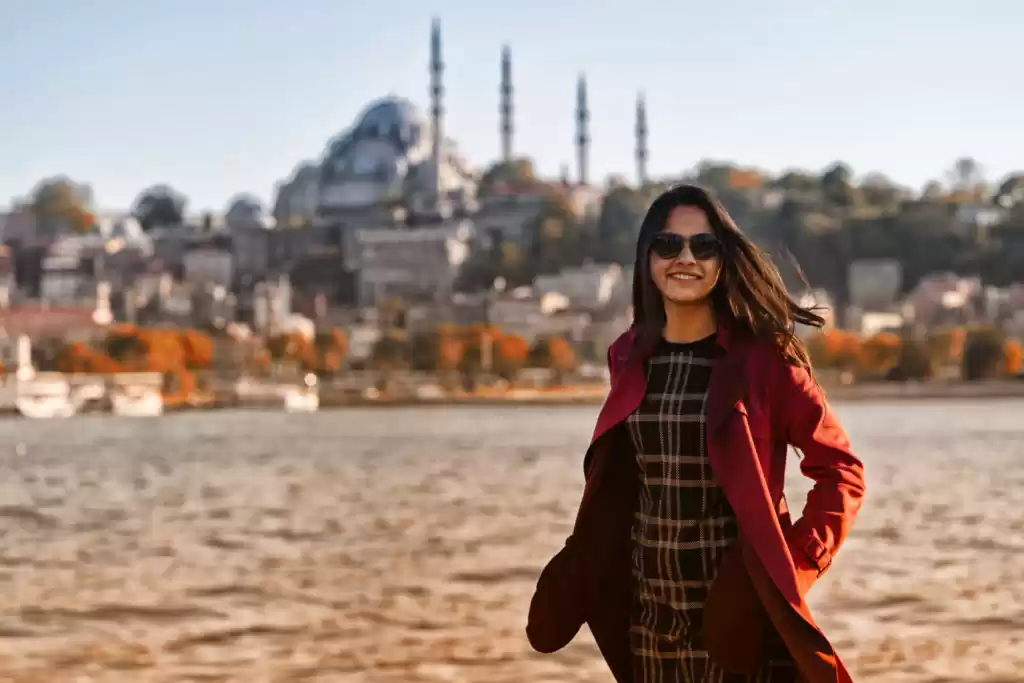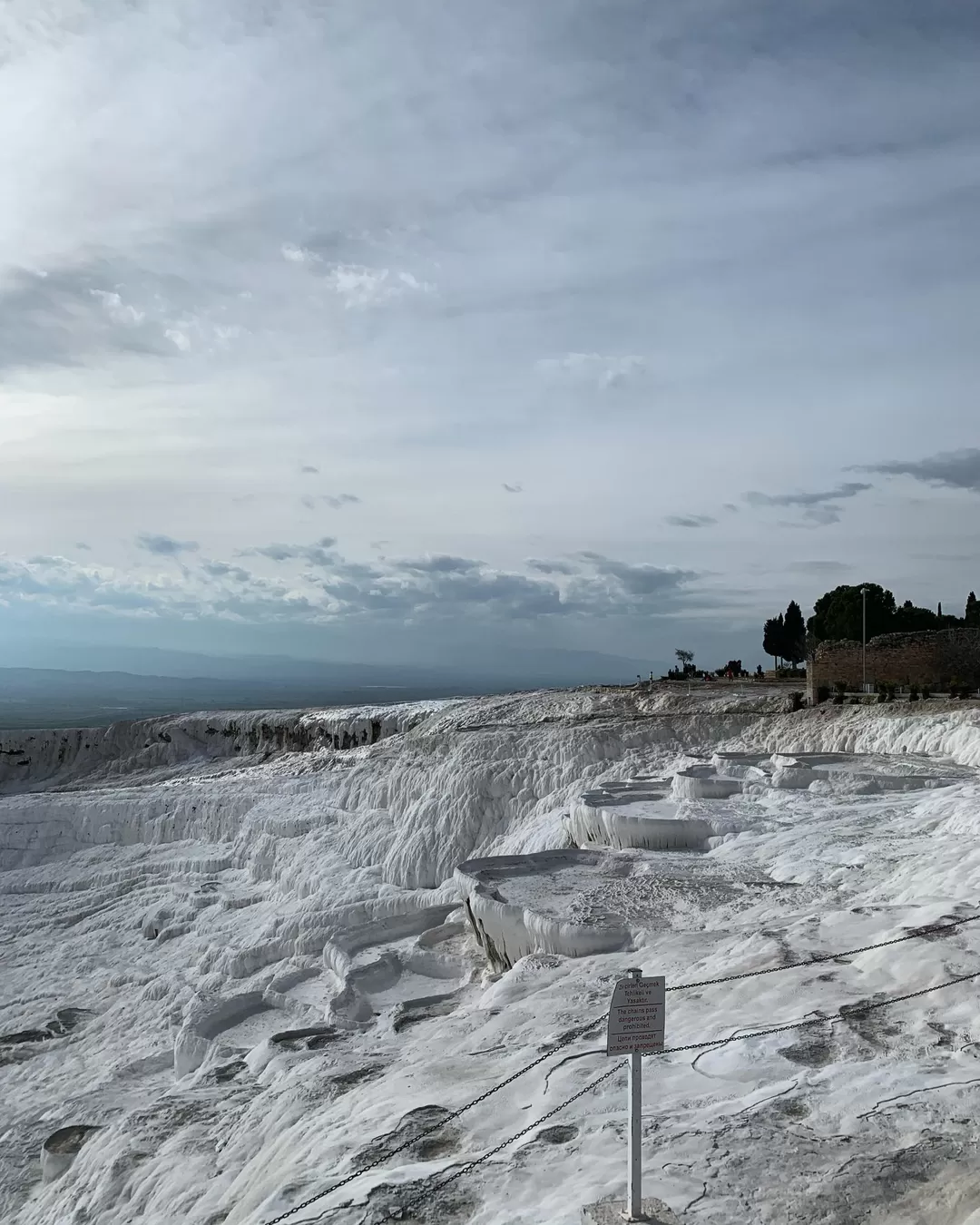




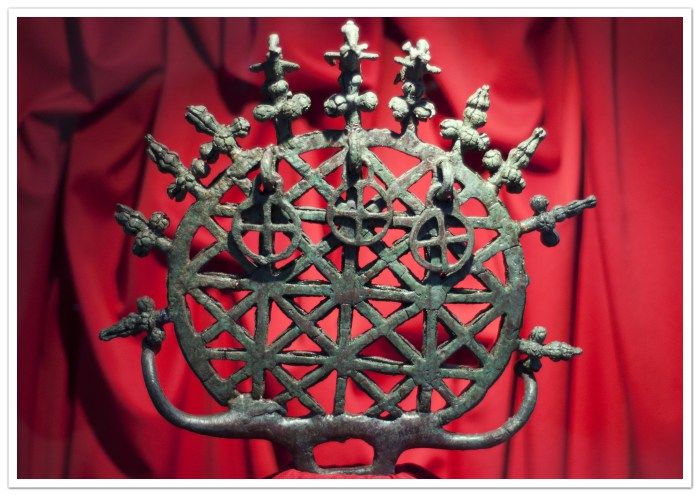









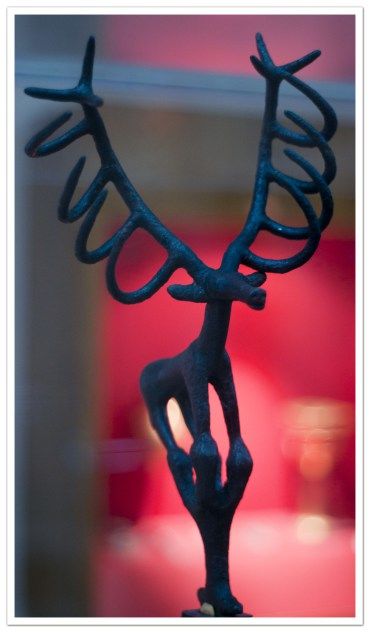
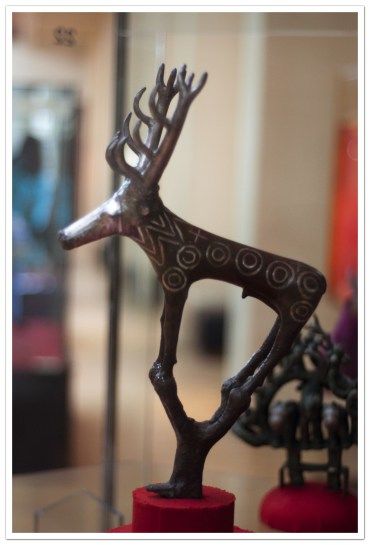









One of the best preserved neolithic civilizations is Çatalhöyük, dated between 7500BC and 5700BC in southern Anatolia, the ancient name for much of the area that is Turkey today. It was a planned society with streets, intersections and houses. However, the houses were rank peculiar – none of them had any doors or windows. The only way to enter was to clamber into a hole on the roof and climb down a ladder. It seems strange that people learnt to put up walls and not make doors in, especially after migrating from caves which have natural entrances. Maybe that’s where the phrase – I’ll drop by – originated.
The museum of Anatolian civilizations has interesting finds from this and more.
The primary deity at Çatalhöyük was a form of Mother Goddess. Excavations show a figurine of a plump woman with full breasts and stomach seated on a chair that has the heads of two beasts carved out as hand rests, now on display at the Anatolia museum atAnkara. The figurine seems to indicate that she was a fertility goddess, which is not surprising considering how many societies had deities for fertility, including Hinduism. This was a time the early artists arose – the museum has some cave murals that show deer being hunted; the color of the murals still fresh more than 8000 years later.
The museum also held artifacts from other epochs. There were intricate bronze statues of antelope and deer from the bronze age, and carvings of stone from the Hittite period. There were other religious paraphernalia as well – an intricate Bronze flagstaff was used during ceremonies as a symbol of regality and for the Sun. A Hittite jar had the wedding celebrations of their king carved out on an earthen jar.
As we wandered around the museum, we saw stone carvings during the Hittite and post-Hittite periods, depicting fantastic chimera. The next stop was at the mausoleum of Mustafa Kemel Pasha, better known as Ataturk, the father of modern Turkey. TheOttoman sultanate had become a pale shadow of its past glory by the early 20th century. In a historic blunder, the Sultan of Turkey sided with the Axis towards the end of World War 1, only to have the Allies cast bids on which parts of Turkey they would control after the war. Ataturk gathered theTurkish army, won back land front Allies, ousted the Sultan and formed the republic of Turkey.
The history of the next couple of decades is a fascinating read. Ataturk embraced secular Islam, realized that Turkey would have a better future by embracing its European ethos and instituted a wide range of reforms. He moved the capital from Istanbul to Ankara, then a small town that could be expanded to build a capital. Though Turkish was retained as the national language, the ancient Turkish script derived from arabic was replaced by the latin character set, with additional elements (like Hindi matras) to make it phonetic. Encouraged by their leader, Turks adopted a western style of dressing. Despite a population of over 80% Muslims, Turkey became secular. Roads were constructed, many institutions were setup, and amongst the strangest things I heard, Turks got surnames. During the Sultanate, Turks used just their first name and father’s name, but that led to major administrative hassles. Under Mustafa Kemel Pasha, the Turkish republic set up a requirement that everyone should choose a surname. The parliament also conferred the honor of Ataturk – father of Turks – to Mustafa Kemel Pasha, and forbade anyone else from using that.
"Where did they get the money for reconstruction from?" I asked Tijen, our tour guide.
Ataturk asked for personal contribution from citizens, but also invited Jews from various lands to settle in Turkey, primarily owing to their being wealthy and good tradesmen. They were given freedom to practice their religion, and flourished – some still count amongst the richest families in Turkey. As Ataturk was a soldier, we saw a military outfit march around his mausoleum. We also saw guards who held their rifles and stood steady in the cold weather for hours at a stretch.
After a stroll around the massive mausoleum grounds, we left for Capadocia, stopping en route at a salt lake formed by inland rivers. They produced edible salts, but were also selling skin youthfulness potions from the salt, citing various health reasons. We had an interesting day at Ankara, but that was just a prelude to the days ahead.
Frequent Searches Leading To This Page:-
cheapest turkey tour packages, cheapest turkey tour packages from India, turkey packages with flights, turkey packages, turkey Greece tour packages from India, turkey holiday packages cheap



















